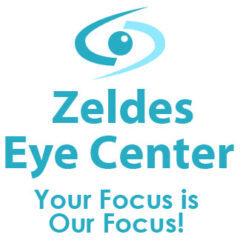Macular degeneration is characterized by a loss of focus in the center of the visual field, often while leaving peripheral vision intact. Patients with macular degeneration will have difficulty focusing directly on objects and faces, and will likely struggle with activities such as driving or reading.
Video Transcription
Light rays enter the eye through the cornea, pupil, and lens. These light rays are focused on the retina, a light-sensitive tissue lining the back of the eye. The retina has two areas: the peripheral retina, and the macula. The macula is a small area at the center of the retina. The peripheral retina is the large area surrounding the macula.
It is the peripheral retina that gives is our side or wide-angle vision. It is the macula that gives us our pinpoint vision and allows us to see details clearly, helping us to do things like drive, read, or recognize a face. Age-related macular degeneration (AMD) is a breakdown of the macula.
When the macula doesn’t work properly, your central vision can be affected by blurriness, dark areas, or distortion. This condition affects many people as they get older.

